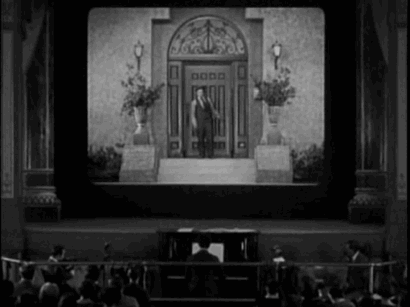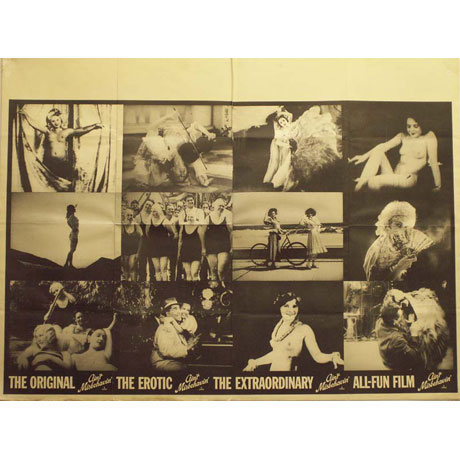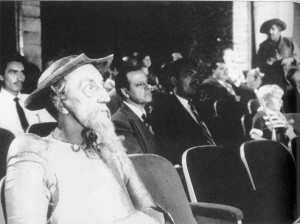From the Chicago Reader (March 1, 1997). — J.R.
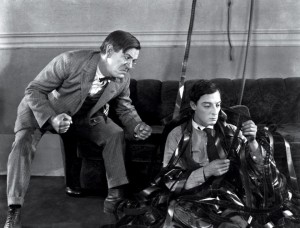
A rare chance to see Buster Keaton’s two greatest features on the same program. In Sherlock Jr. (1924) — his most imaginative and freewheeling work, as well as one of his funniest — he plays a movie projectionist who falls asleep during a detective movie and dreams that he literally walks into the screen, with surreal and bewildering consequences. In The General (1926), probably his most beautiful effort, he plays a railroad engineer during the Civil War whose train is stolen by Union soldiers, who also kidnap his girlfriend (Marian Mack); Clyde Bruckman codirected. Both are indispensable viewing.

 Read more
Read more
From Monthly Film Bulletin, March 1975 (Vol. 42, No. 494). — J.R.
Ain’t Misbehavin’
Great Britain, 1974 Directors: Peter Neal, Anthony Stern
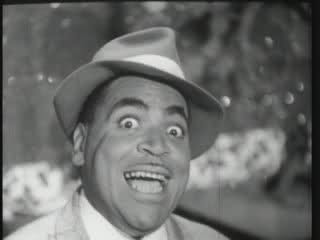
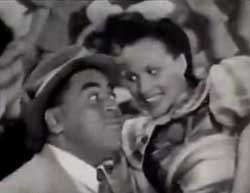
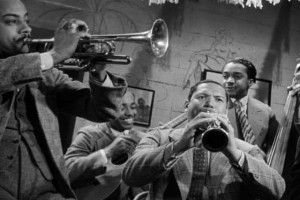
Cert–X (London). dist–Focus. p.c–Al0K Pictures Ltd. p–David
Speechley. ed–Peter Neal, Misha Norland. m/songs–“Please Be Kind”
performed by Django Reinhardt; “The Man I Love” by George Gershwin,
Ira Gershwin, performed by Django Reinhardt; “Honeysuckle Rose”,
“Ain’t Misbehavin'” by and performed by Fats Waller; “Adagio in G
Minor” by Albinoni; “Don’t Be a Baby” performed by Ahmed Rai,
Betty Underwood; “Ain’t Gonna Be Your Dog” by and performed by
Meade Lux Lewis; “Cabaret Echoes” performed by Anthony Parenti’s
Famous Melody Boys; “Charlie Is My Darling” performed by Black
Dyke Mills Band; “No One But the Right Man Can Do Me Wrong”
performed by Sophie Tucker; “Animals’ Ball” performed by Lizzie
Miles; “My Canary’s Got Circles Under His Eyes” performed by Elsie
Carlisle; “Shy Guy” performed by Nat Cole Trio; “Londonola”
performed by Roy Fox; “Boogie Woogie at the Civic Opera” by and
performed by Albert Ammons; “My Old Man” performed by Lilly
Morris; “With My Little Ukelele in My Hand” performed by George
Formby; piece by Ivy Benson Orchestra. titles–Ray Cowell, Freeman
May Studio Ltd.
Read more
The best scene from Orson Welles’s Don Quixote
I hope I can be forgiven for promoting a piece of my own promotion. It seems worth doing in this case because an hour-long interview with me by Mara Tapp about my latest book, Discovering Orson Welles, taped for CAN TV19 and showing on Sunday, October 21, at 5 PM and then again on Monday, October 22, at noon, entitled “Unseen Orson Welles,” includes a silent, five-minute sequence from Orson Welles’ unfinished Don Quixote that is arguably the greatest sequence he shot for the film, even though it can’t be found in the execrable version cobbled together by Jesus Franco in 1992. It was shot in the mid-1950s in Mexico City, during the postproduction of Touch of Evil. It’s set in a movie theater, features child actress Patty McCormack as herself, Francesco Riguera (see photo) as Quixote, and Akim Tamiroff (perhaps Welles’s favorite character actor, who also appears in Mr. Arkadin, Touch of Evil, and The Trial) as Sancho Panza, and is fully edited by Welles.
“The Most Beautiful Six Minutes in the History of Cinema”
Thanks to Reader webmaster Whet Moser, here’s a scene from Welles’s Don Quixote, preceded by a few comments from me from an upcoming interview, “Unseen Orson Welles.”
Read more
From Monthly Film Bulletin , September 1976, vol. 43, no. 512. — J.R.
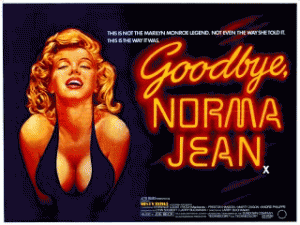
Goodbye, Norma Jean
U. S.A./Australia, 1975
Director: Larry Buchanan
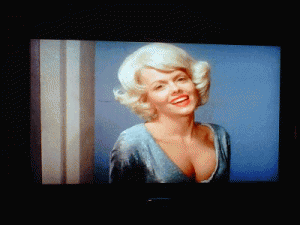
Hollywood, 1941. Ogled by her foster father and despised by her foster mother, Norma Jean Baker is thrown out by the latter and takes work in a factory. Raped by a policeman whom she earlier persuaded not to give her a speeding ticket, she is comforted by Corporal Ralph Johnson. He prompts her on how to behave when she enters the Miss Whammo-Ammo contest (which she wins), photographs her in cheesecake poses, and advises her in her efforts to become a movie star. They drive to Tijuana and make love, although she admits that her former experiences with men have prevented her from enjoying sex. He next introduces her to model agent Beverly, who finds her work posing for pulp magazine illustrations and introduces her in turn to agent Irving Ollbach, who takes her to a party in Palm Springs. There she is sneered at by casting director Ruth Latimer, raped by actor Randy Palmer (who first offers to give her a screen test), and mocked by the party’s host, the wealthy Hal James, who none the less later arranges for her to have an interview at Lion-Rampant pictures. Read more
From New York Newsday (Sunday, August 28, 1991). -– J.R.
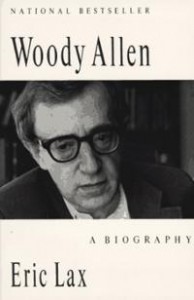
WOODY ALLEN: A Biography, by Eric Lax. Knopf, 384 pp., $24.
BY JONATHAN ROSENBAUM
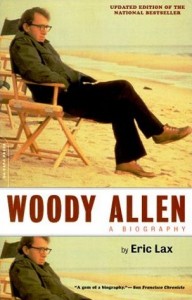
How does one write the biography of an untouchable? Without touching him –- or at least by handling him with kid gloves. When it comes to dealing with America’s favorite comic spokesman for the urban middle class, Eric Lax does a fair job of plotting out both the apprenticeship and the career moves of Woody AIlen as he gradually worked his way up from gag writer to stand-up comedian to increasingly ambitious filmmaker (from “Bananas” to”Hannah and Her Sisters” to “Another Woman”), with various side trips –- as jazz clarinetist, playwright and literary humorist — along the way. But when it comes to separating the Woody persona from the actual person, or the mystique from the life, Lax’s agenda goes soft. Devoted fans may discover a few unmined nuggets here, but for skeptics like myself the experience is as unreflective as any of Allen’s movies.
 After an introduction that briefly chronicles Allen’s tortured
After an introduction that briefly chronicles Allen’s tortured
23-hour trip to the Soviet Union in 1988, Lax begins with the
birth of Allan Stewart Konigsberg in 1935 and the creation of
his familiar stage name 16 years later. Read more
The following was commissioned by and written for Asia’s 100 Films, a volume edited for the 20th Busan International Film Festival (1-10 October 2015). I’m delighted that this prompted Adilkhan Yerzhanov to send me a very kind email along with a fresh link to his film. — J.R.
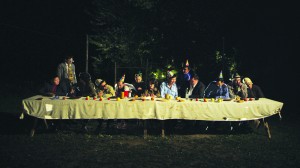
I’ve seen Adilkhan Yerzhanov’s The Owners (2014) only once, and if I dwell on my inability to see it a second time for this review, this is only to pay tribute to the issues and complications of ownership, which are so basic to the film’s universal relevance.

One year ago, I wrote the following as part of my bimonthly column for the Spanish film magazine Caimán Cuadernos de Cine: “12 June (Chicago): As preparation for serving as a ‘mentor’ to student film critics at the Edinburgh Film Festival, I watch online a film they’re assigned to write about, Adilkhan Yerzhanov’s The Owners from Kazakhstan. This is quite a revelation — at least for me, if not, as I later discover, for most of the students. Three city siblings arrive in the county to claim the ramshackle hut they’ve inherited from their deceased mother, and the tragicomic misadventures and forms of corruption that they encounter oscillate between grim realism, absurdist genre parody, and dreamlike surrealism, culminating in a doom-ridden yet festive dance in which both victims and victimizers participate….Yerzhanov’s Read more
From the Chicago Reader (January 14, 2000). — J.R.
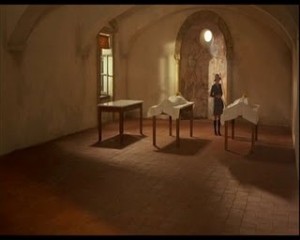
This 1972 release is the most underrated of all Billy Wilder comedies and arguably the one that comes closest to the sweet mastery and lilting grace of his mentor, Ernst Lubitsch. Jack Lemmon arrives at a small resort in Italy to claim the body of his late father, who perished in a car accident, and there he meets Juliet Mills, whose mother died in the same accident and, as it turns out, had been having an affair with the father. The development of Mills and Lemmon’s own romance over various bureaucratic complications is gradual and leisurely paced; at 144 minutes, this is an experience to roll around on your tongue. Wilder and I.A.L. Diamond adapted a relatively obscure play by Samuel A. Taylor, and the lovely music is by Carlo Rustichelli; with Clive Revill and Edward Andrews. A new 35-millimeter print will be shown. Film Center, Art Institute, Columbus Drive at Jackson, Saturday, January 15, 3:30, 312-443-3737
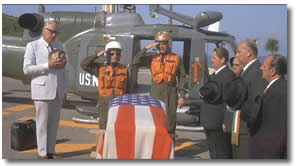 Read more
Read more
FRANKLY, MY DEAR: GONE WITH THE WIND REVISITED by Molly Haskell (New Haven/London: Yale University Press), 2009, 244 pp.
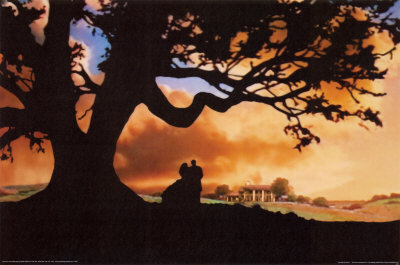
I’m glad that Armond White gave this book a favorable review in the New York Times, which it clearly deserves. But I wish he hadn’t muddied his kindness with lazy misinformation and lazier prose.
Misinformation: “Haskell gave up regular reviewing in the early ’90s, leaving criticism that seriously examined the big-screen image of women and the popular representation of female social roles to go underground — into academic studies where abstruse, tenure-seeking jargon is used to rebuff popular taste.” I’m not aware that Haskell ever left the kind of criticism White describes; unless one decides to make a very big deal out of her brief stint of teaching, she certainly didn’t go into “academic studies”, abstruse, jargony, or otherwise; and if White knows something that the rest us don’t about her rebuffing of popular taste, I wish he’d enlighten us further on this subject.
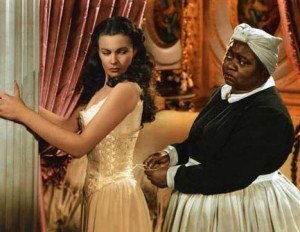
Prose: “Haskell intertwines her own history with Mitchell’s Georgia background, Leigh’s British origins and Selznick’s Jewish American determination.” (Whenever White gets around to identifying Haskell’s abstruse, jargony rebuffing of popular taste, he might also explain what Jewish American determination consists of — unless Haskell explains this herself, which I doubt. Read more
From the Chicago Reader (April 10, 1998). — J.R.
The Newton Boys

Not to be hyperbolic, but Richard Linklater’s first big-budget movie may be the Jules and Jim of bank-robber movies, thanks to its astonishing handling of period detail and its gentleness of spirit, both buoyed by a gliding lightness of touch. Linklater, Clark Lee Walker, and Claude Stanush (who also worked on the script of Nicholas Ray’s The Lusty Men) have adapted Stanush’s oral history about the Texas-born Newton brothers, who between 1919 and 1924 became the most successful bank robbers in the U.S. The film may occasionally bite off a few more narrative strands than it can chew, but that’s merely the flip side of its generosity and energy. You can keep your L.A. Confidential; here’s a vision of the American past that I’m ready to climb inside. Matthew McConaughey, Skeet Ulrich, Vincent D’Onofrio, and Ethan Hawke play the brothers; with Dwight Yoakam and Julianna Margulies. 600 N. Michigan. — Jonathan Rosenbaum
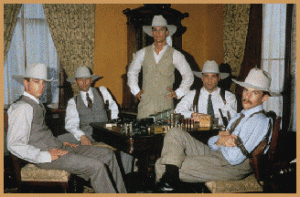 Read more
Read more
Written for a collection edited by Adam Cook, Making the Case: Contemporary Genre Cinema, whose publisher belatedly changed his mind about publishing. This is the article’s first appearance, although it’s also reprinted in my latest book, Cinematic Encounters 2: Portraits and Polemics. — J. R.

Out of his half-dozen comedy features to date as producer-writer-director — Terms of Endearment (1983), Broadcast News (1987), I’ll Do Anything (1994), As Good as It Gets (1997), Spanglish (2004), and How Do You Know (2010) — James L. Brooks has had three big commercial successes (the first two and the fourth) and three absolute flops (the third, fifth, and sixth). And because all six of these movies are concerned equally with personal failure and personal success, functionality (emotional and professional) as well as dysfunctionality (emotional and professional), it somehow seems fitting that each one has represented a highly ambitious as well as a highly risky undertaking.
The above paragraph has the disadvantage of making Brooks seem so unexceptional as a commercial filmmaker that one might wonder, on the basis of this description, whether he’s worth examining at all. Some might also question whether all six of his movies qualify as comedies, despite Brooks’ own insistence that they do. Read more
My favorite online film magazine

I’m a frequent contributor to Rouge, so I hope nobody thinks I’m tooting my own horn if I come right out and say that I regard it as the best film magazine going that’s exclusively online. It’s been around since 2002, and it happens to be based in Australia, but you might not even notice this if you were scanning the table of contents of any issue, because it’s far and away the most international of film magazines in English. The latest issue, number ten, has contributors from Australia, Brazil, France, Hungary, Japan, Portugal, Russia, and the U.S., including some filmmakers (Pedro Costa and Mark Rappaport) as well as critics writing about films from most of those countries plus England, India, and Bosnia. About half of the 16 contributors are writing in English, about a third are translated from French, Japanese, or Portuguese, and a couple more express themselves exclusively in the form of a photograph or film frames. In fact, one of the most fascinating of Rouge‘s former issues, number five (2004), devoted itself exclusively to images selected by 52 contributors.
It’s fairly highbrow, and relatively austere in spite of its ingenious uses of images, so I can’t pretend that Rouge is geared to every taste.
Read more
The following is from the [London] National Film Theatre’s program guide in December-January 1975-76, introducing a retrospective that I curated. If the valuation that I placed on Altman seems more idealized to me now than it did at the time, the fact that it came shortly after his best run as a filmmaker explains much of my enthusiasm. But my disillusionment with the media support of Altman already began to sour after I described at length the use of sound in a particular sequence from California Split to a BBC-Radio interview, only to discover that the broadcast version blithely substituted a different sequence from the film to illustrate my point, thereby reducing my analysis to gibberish. -– J.R.
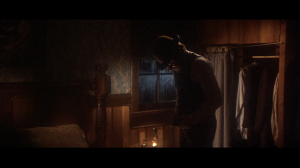
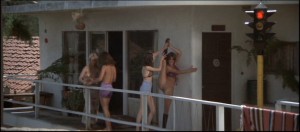
While most commercial American streamliners turn all members of an audience into second-class passengers following the same route from an identical vantage point, Robert Altman’s multilinear adventures oblige us to take some initiative in charting out the trip -– supplying one’s own connections, and pursuing one’s own threads and interpretations in order to participate in a game where everyone, on-screen and off, is entitled to a different piece of the action.
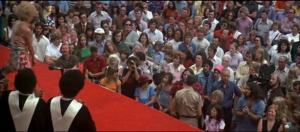
Admittedly, this is a somewhat idealized description of an approach that is still in a state of development, and not every Altman film conforms precisely to this model. Read more
I’m saddened that Andrew Sarris (1928-2012) didn’t live longer than 83, even though he had a very rich and rewarding career as a film critic.
This book review appeared in the sixth issue of Cinema Scope (Winter 2001) and is reprinted in Goodbye Cinema, Hello Cinephilia. — J.R.
The American Cinema Revisited
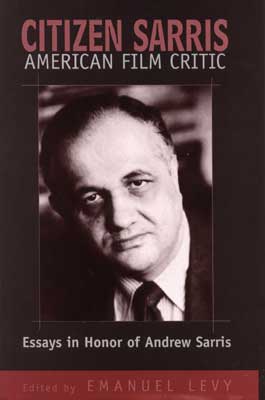
Citizen Sarris, American Film Critic:
Essays in Honor of Andrew Sarris
Edited by Emanuel Levy
The Scarecrow Press, 2001
Ironically, my enemies were the first to alert me to the fact that I had followers.
— Andrew Sarris, Confessions of a Cultist (1970)
One of the main emotions aroused in me by the 40 or so contributions to the millennial Festschrift Citizen Sarris is nostalgia –- specifically, a yearning for the era three or four decades ago when something that might be described as a North American film community was slowly emerging and recognizing its own existence.
This was just before academic film studies, radical politics, drugs and diverse other developments splintered that community into separate and mainly non-communicating cliques and ghettos, accompanied by an intensification of studio promotion that eventually took infotainment beyond its status as a minor industry and into an arena where advertising was coming close to defining as well as monitoring the whole of film culture, thus phasing out individual voices -– or at the very least bunching them together in sound bites, pull quotes, bibliographies and adjectival ad copy. Read more
From Cineaste, Summer 2008 (Vol. XXXIII, No. 3). It’s gratifying that Such Good Friends has finally come out on DVD. — J.R.
The World and its Double: The Life and Work of Otto Preminger
by Chris Fujiwara. New York: Faber & Faber, 479 pp., illus. Hardcover: $35.00.
Otto Preminger: The Man Who Would Be King
by Foster Hirsch. New York: Alfred A, Knopf, 573 pp., illus. Hardcover: $35.00
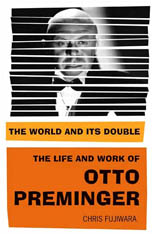
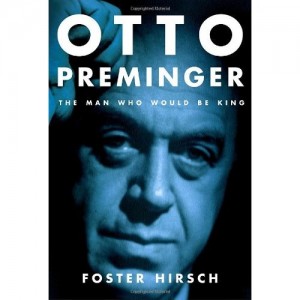
Few film directors resist critical biography as much as Otto Preminger, given all the puzzling and intractable mismatches one encounters as soon as one tries to reconcile his very public life with his no less private body of work as an auteur. This is a difficulty acknowledged in the title and subtitle of Chris Fujiwara’s book, and one he essentially tries to resolve by splitting most of his chapters into two sections. But the overall disassociation of Preminger’s life and work, even though it’s addressed by this structure, still becomes a kind of structuring absence that haunts this biography as well as Foster Hirsch’s, which tries to integrate the two concerns more conventionally. Read more
From the Chicago Reader (February 23, 1996). — J.R.

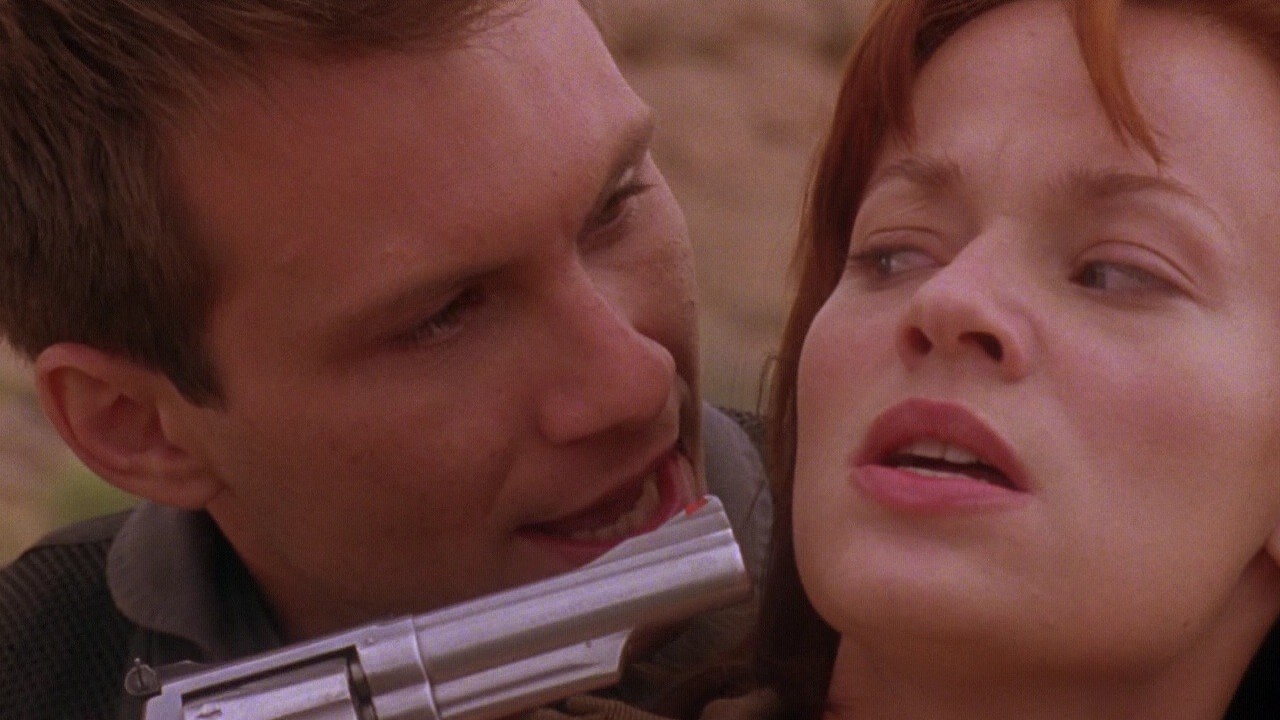
Rumble in the Bronx
Directed by Stanley Tong
Written by Edward Tang and Fibe Ma
With Jackie Chan, Anita Mui, Francoise Yip, and Bill Tung.
Broken Arrow
Directed by John Woo
Written by Graham Yost
With John Travolta, Christian Slater, Samantha Mathis, Delroy Lindo, Bob Gunton, and Frank Whaley.
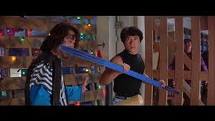
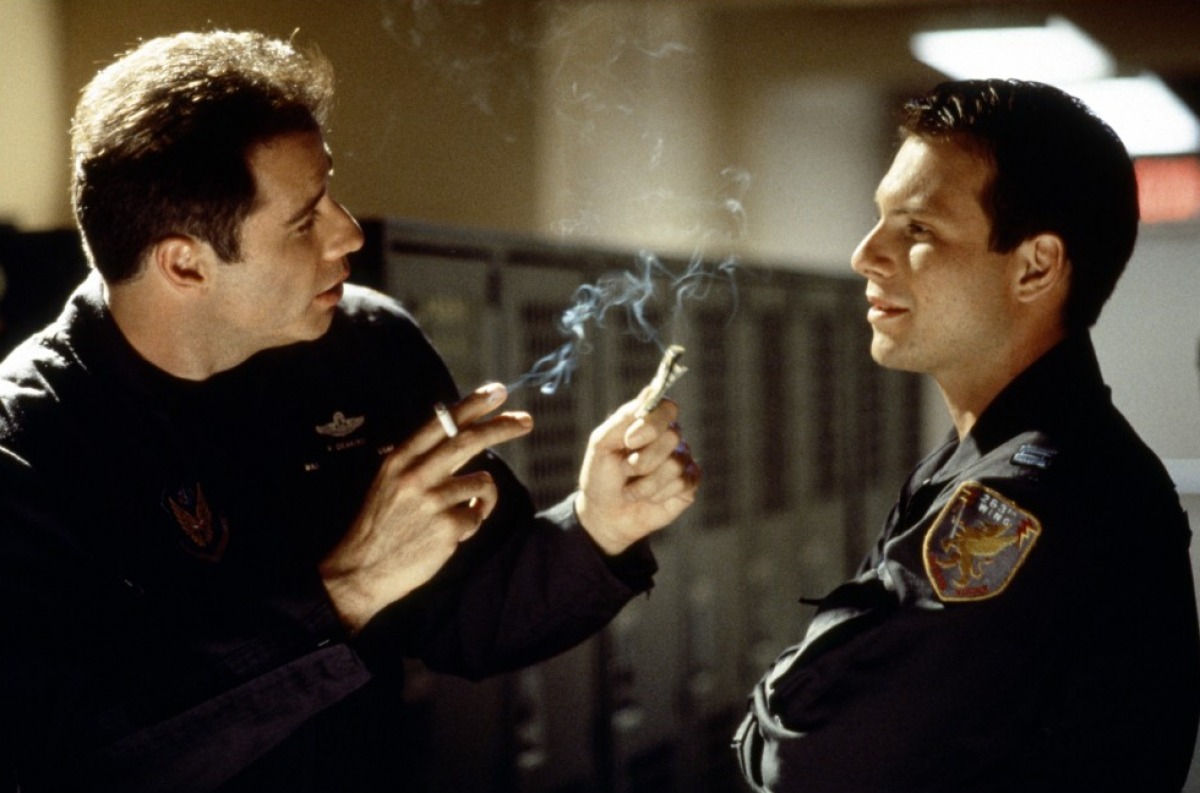
Many people who’ve seen Saturday Night Fever probably remember the poster of a bare-chested Sylvester Stallone as Rocky in the bedroom of Tony (John Travolta), the king of Brooklyn disco. But how many recall the poster of a bare-chested Bruce Lee as well? In the nearly two decades since Saturday Night Fever was released, the dream of wedding Hong Kong action pyrotechnics with Hollywood production values to conquer the American mainstream has surfaced periodically, but until recently the results have seemed halfhearted at best.
I haven’t seen any of the earlier Jackie Chan vehicles with American settings — films like The Big Brawl (1980) and The Cannonball Run (1981) — but it’s clear that none of these succeeded in turning Chan into an American household word. At most he’s become an alternative action hero for some passionate aficionados — especially in Chicago, where Barbara Scharres’s efforts at the Film Center to honor his work, climaxing in an in-person appearance a few years back, have helped to foster a growing cult. Read more


